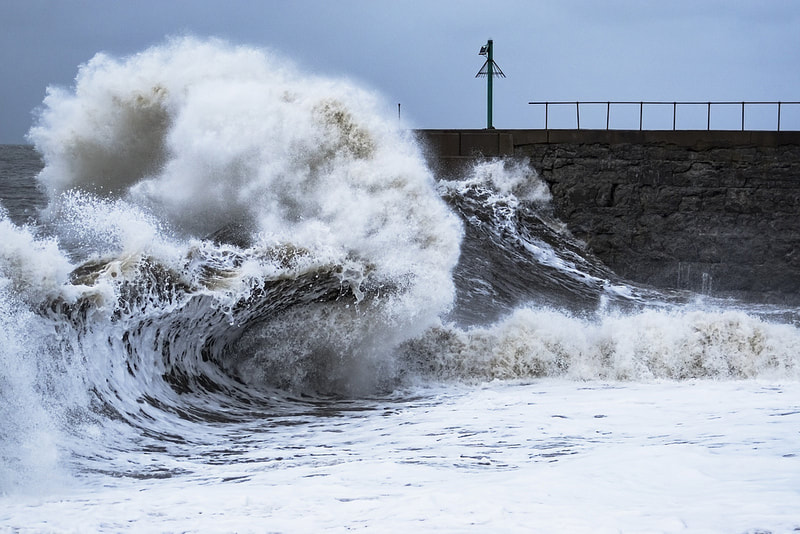|
I think we can all agree the recent storm activity was a great wake up call reminding us all how we should be prepared for what mother nature might bring. No matter hurricane, wildfire or any other natural disaster I can promise you will rest better knowing you have taken steps to prepare prior to the onset of a natural disaster. Below are 8 suggested disaster preparation categories to build your “readiness” kit:
Water. It’s recommended to have 1 gallon of water per day per person or pet. A tip would be to also clean your bathtub and fill it up with water! Also having mini water filtration/purification straws on hand would be ideal. If cost is a concern with purchasing filtration straws remember to always boil all questionable water before drinking. Food. The minimum recommended amount is 1 week of food however please note that following both hurricanes Katrina, Harvey and Maria many required emergency food rations for nearly 2 weeks following the event. Non-perishable food is best. Consider: canned veggies and fruits, boxed foods, nuts, dried fruit, energy-rich snacks, peanut butter, juices. Freeze dried camper’s meals are delicious and super simple to prepare however are a bit pricier. Also learning how to dehydrate or canning your own food are other great ways to ensure you have food on standby. Also purchase any needed pet food and supplies. Medication. Consider if taking prescription medication that you never allow yourself to run completely out. Have extra refills in your kit. Also have on hand any over- the -counter medication like painkillers, contact lens solution or any daily vitamins. If you are allergic to insect stings or have other allergies that may require the use of an epi-pen to avoid anaphylaxis be sure to have associated materials on hand. First aid kit. Sterile gloves, gauze pads, sterile bandages, Band-Aids, antibiotic ointment, disinfectant wipes, adhesive tape, sunscreen, insect repellant and instant hot and cold packs. Tools and household supplies. The following suggestions cover many aspects but all are good to have on hand. Blankets, sleeping bags. Paper plates, cups and plastic utensils. Candles, matches, scissors, nail clippers, tweezers, a sewing kit, multiple LED flashlights and extra batteries (take a moment and survey what size batteries you need and have extra on hand). Even better would be a hand crank model flashlight which does not require batteries and are easily recharged by winding the crank. An adjustable wrench or “multi-tool”. A Philips and flat head screwdriver, wire cutter, hammer, nails, small fire extinguisher, manual can opener, water proof shoes or boots and a knife are other great items to have in your kit. A backup battery pack for cell phone as well as a battery-operated radio and duct tape. **side note: Depending on the emergency, you may need to turn off the water, gas and electricity in your home. Familiarize yourself with where all these shut off valves are prior to an emergency. Personal Hygiene kit. Personal hygiene is on one of the first things to go when involved in a large-scale disaster and the most IMPORTANT to maintain. Products such as toilet paper, feminine products and toiletries, dental needs, sterile wipes, hand sanitizer et are essential. Cleaning products. disinfectants, bleach, mop, towels, sponges, paper towels, dish soap, buckets, large trash bags, rubber gloves. Extra cash. Having cash on hand is a great thing. You never know when and where you might need to have cash, so having a little extra is a good thing.
0 Comments
The safest bet is to just evacuate when advised!50% of storm related deaths are due to people drowning in their vehicles. It only take six inches of water to make a car float away. What would you do if you found yourself stranded in the middle of a fast moving stream? Would you ditch the car and swim for it? We asked Fire Chief, Larry Kurtz the Orange County, California Public Safety Officer what to do in the case our vehicle was overtaken by water...
What can you do to keep your home & family safe in a wildfire?I have an interesting history with wildfires. My first experience was in 2004 when I woke up from a dead sleep to a wall of fire over 100 feet high and a mile wide less than a mile away from our home. It was a very dry winter and we were having severe Santa Ana winds that whipped mini fire tornados across the land. The fire was moving 50 miles per hour and on a two lane highway, there was no telling what direction to evacuate.
Have you ever wondered how to evacuate with water on the road?Have you ever wondered what would happen if your car was swept off a road and into a flooded riverbank? What would you do? Jump out before or after the car submerged? What if the door didn't open? We've interviewed experts in the field of emergency management to ask for the answers that may save your life one day. Here's what you need to know...
|
AUTHORS
President & Founder ArchivesCategories |
HoursM-F: 9am - 5pm
|
Telephone772-444-7827
|
Info@NoTownLeftBehind.org
|






 RSS Feed
RSS Feed
